Reducing Sprains and Strains
9 min read
Over three years, this project worked closely with farmers and other experts to co-design equipment to reduce sprain and strain injuries on-farm. Sprains and strains are common injuries on dairy farms, especially during the busy calving season. However, many of these injuries can be prevented. Innovative solutions were developed and tested to reduce these injuries and the best are now available for farmers.
To reduce sprain and strain injuries on-farm and develop practical solutions to reduce these. This project was in partnership with ACC, spanning three years from 2021 to 2024.
Project status: completed
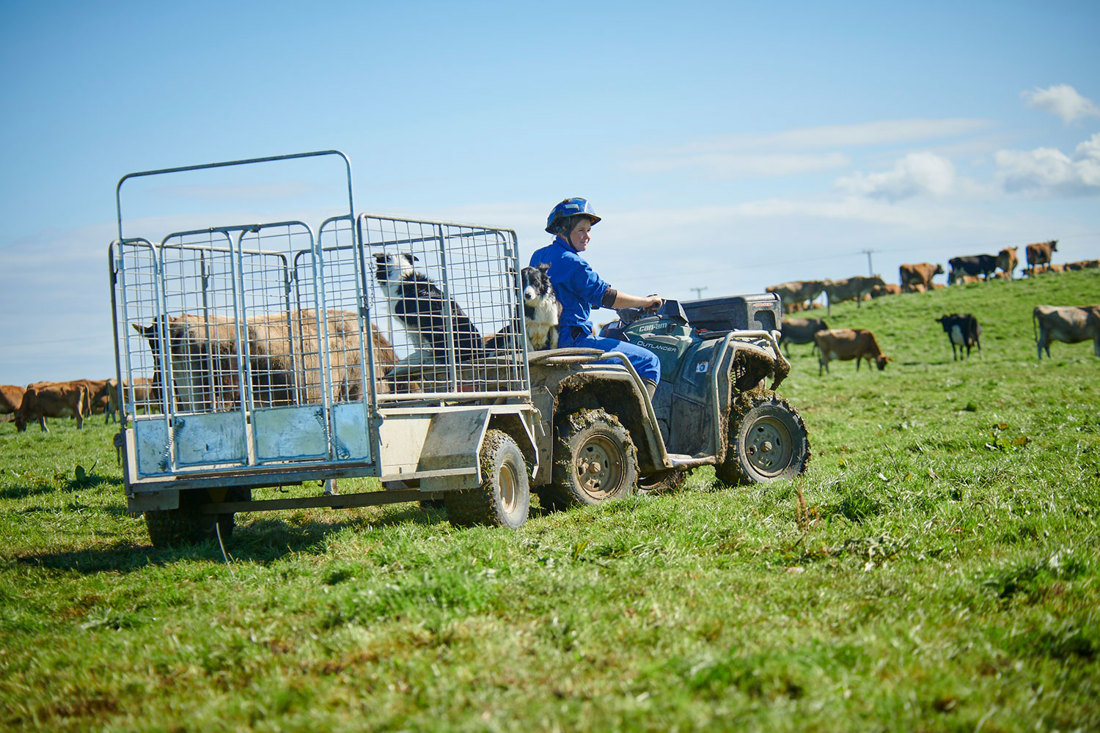
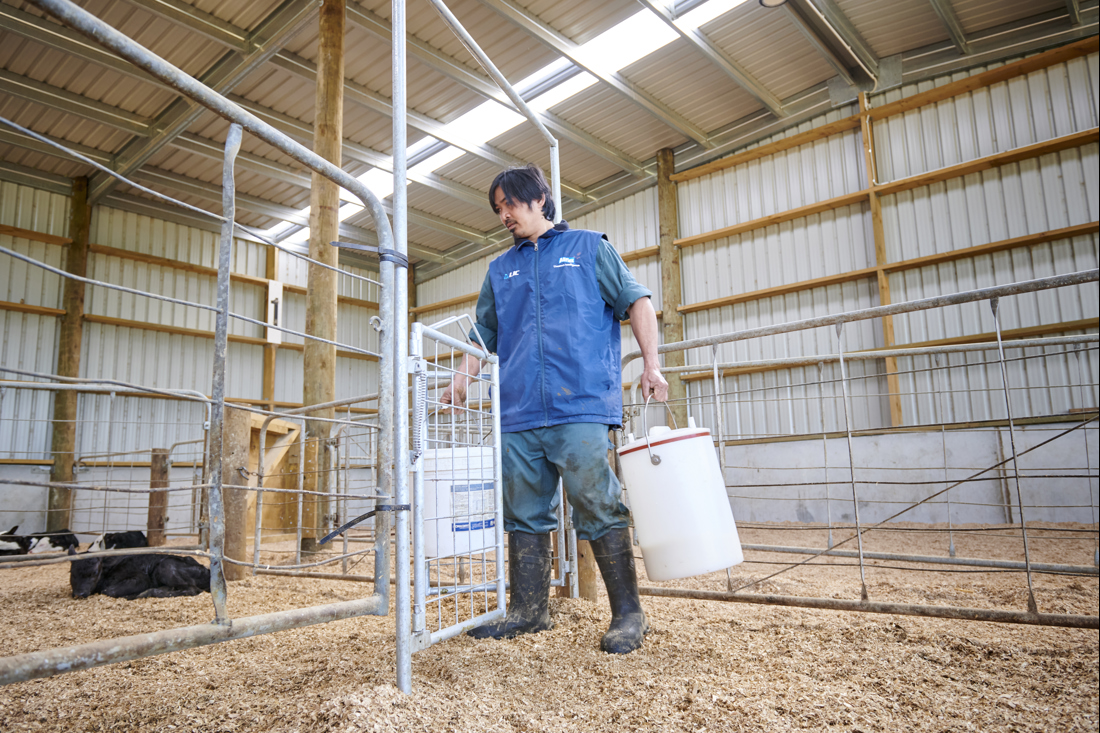
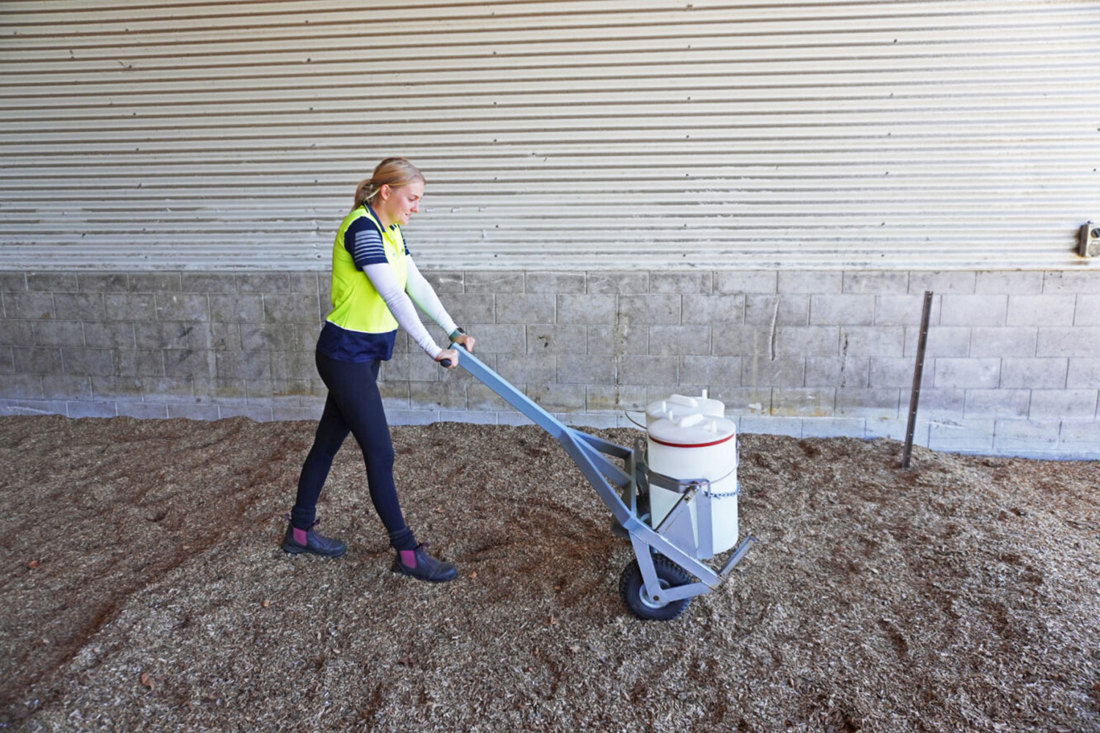
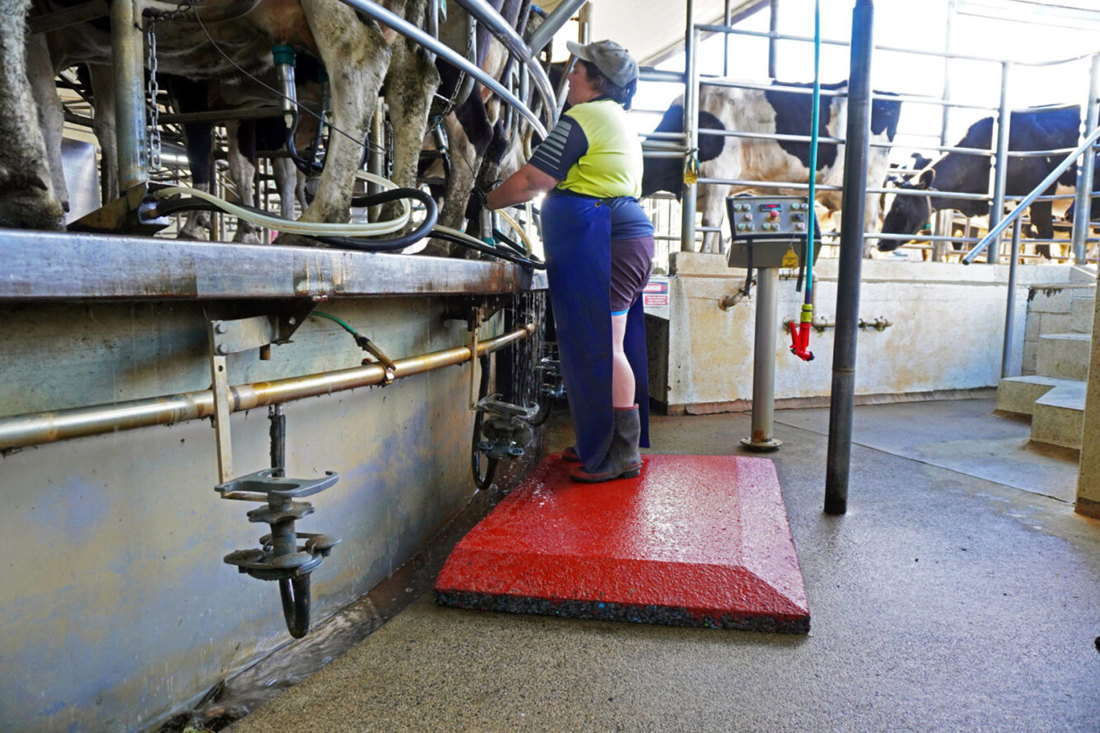
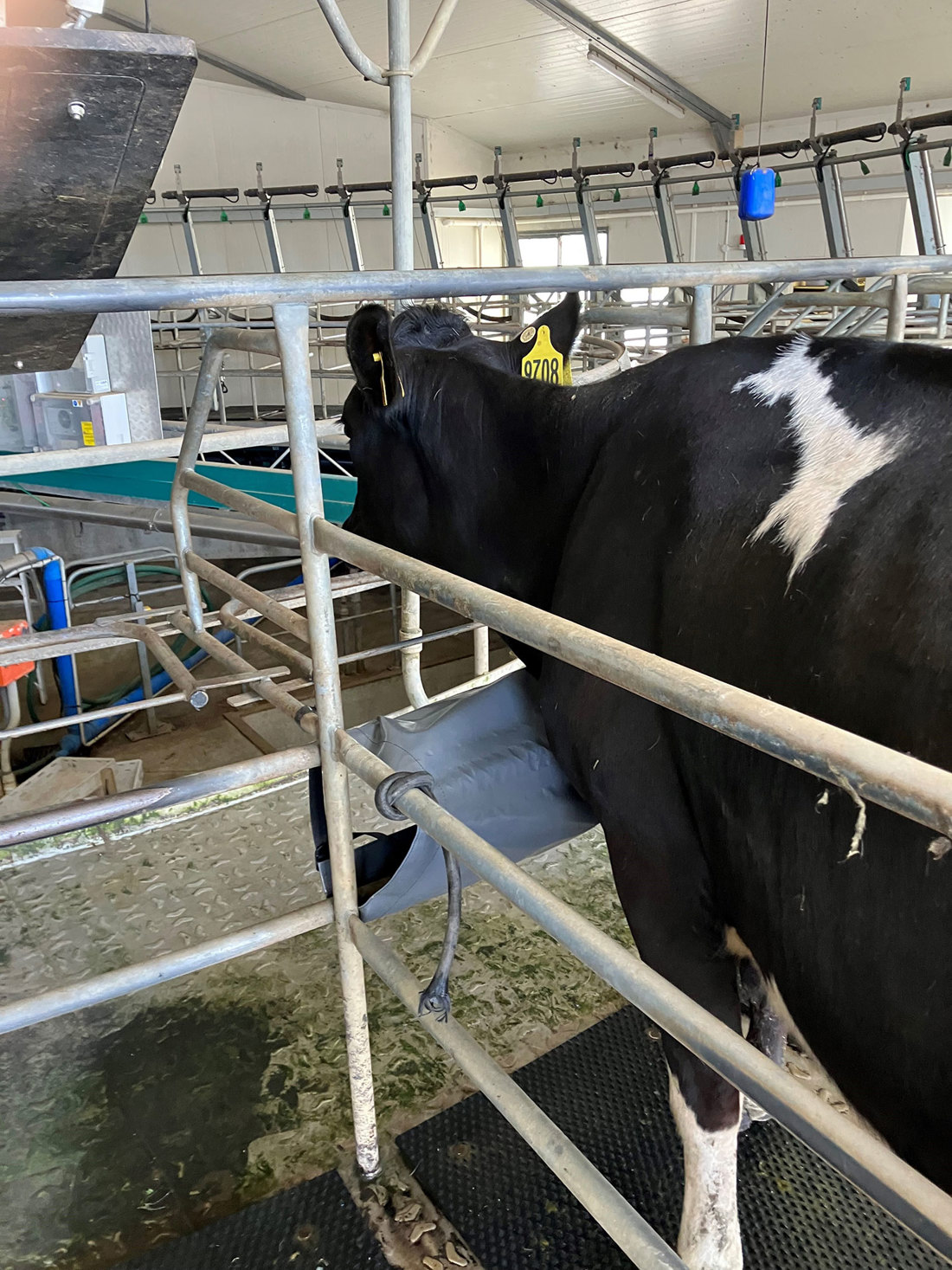
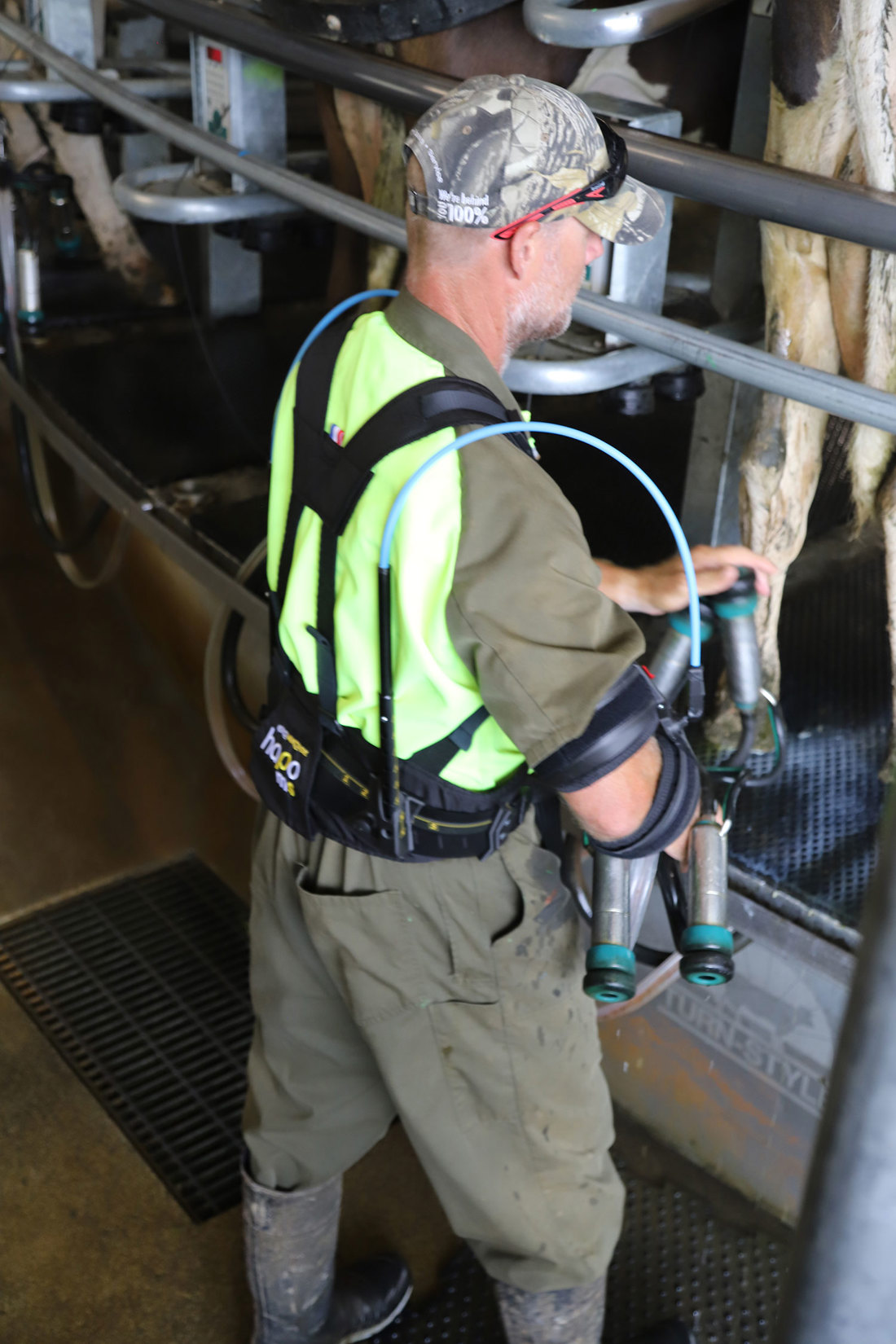
The last few years have been busy, see what we have been up to in the timeline below.
Working with farmers to define the issues leading to on-farm sprains and strain injuries.
Working with farmers and other experts to reduce these injuries.
Developing and testing concepts, prototyping with farmers, and testing them on-farm and refining them through farmer feedback, to create robust products suitable for farmers to buy.
According to New Zealand’s Accident Compensation Corporation (ACC) data, sprains and strains (overstretching or tearing of soft tissues in and around a person’s joints) are common on dairy farms – but many are preventable.
In 2022 and 2023, there were about 1,500 claims to ACC each year (totalling $5-6 million and representing around 40% of dairy-related claims). Many of those injured take injury leave at the busiest time of the year. The highest risk period for injuries is between August and October. This coincides with the spring calving season when we often see longer working hours and fatigue occurring.
In 2021/22, we surveyed 370 farmers and employees from farms that did and didn’t experience sprain and strain injuries, and found:
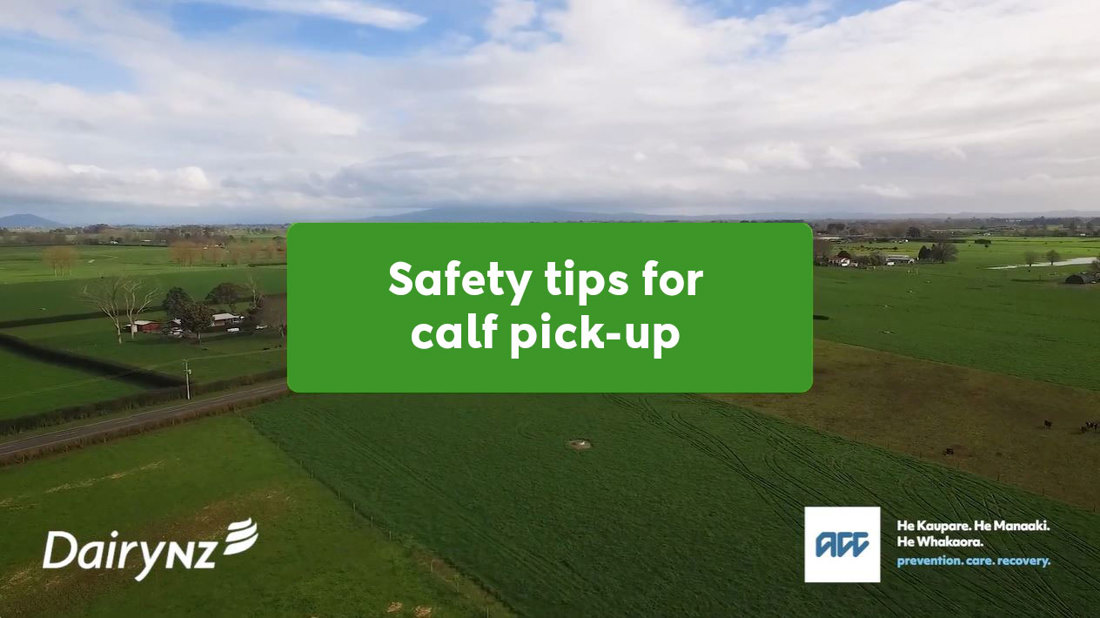
Keep a spring in your step - Picking up calves
1 / 3 videos 1 min
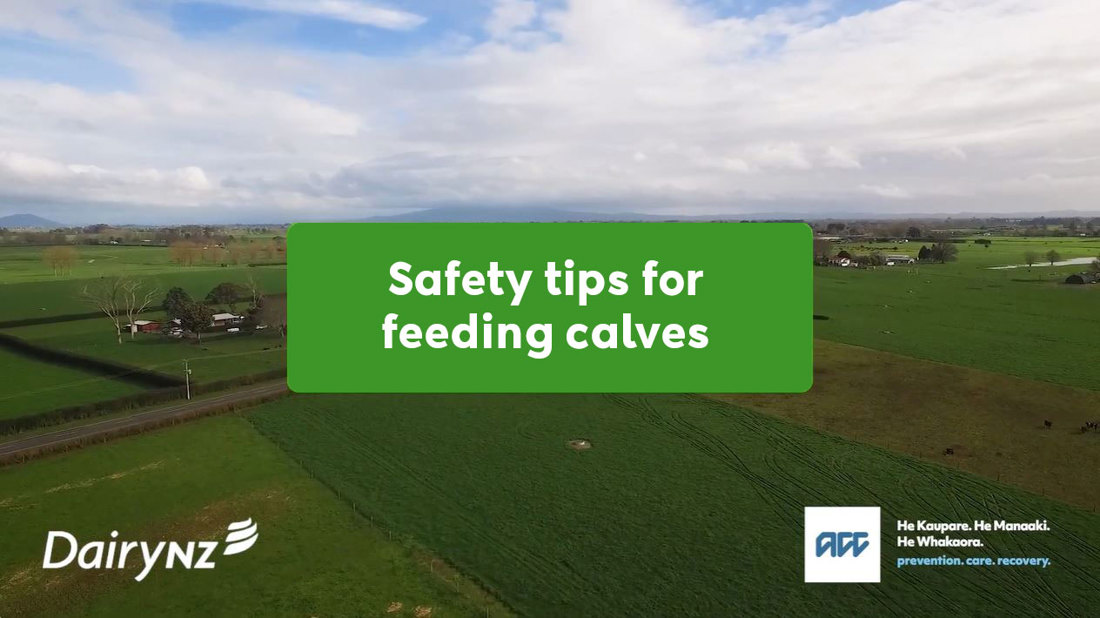
Keep a spring in your step - Feeding calves
2 / 3 videos 1:04 min
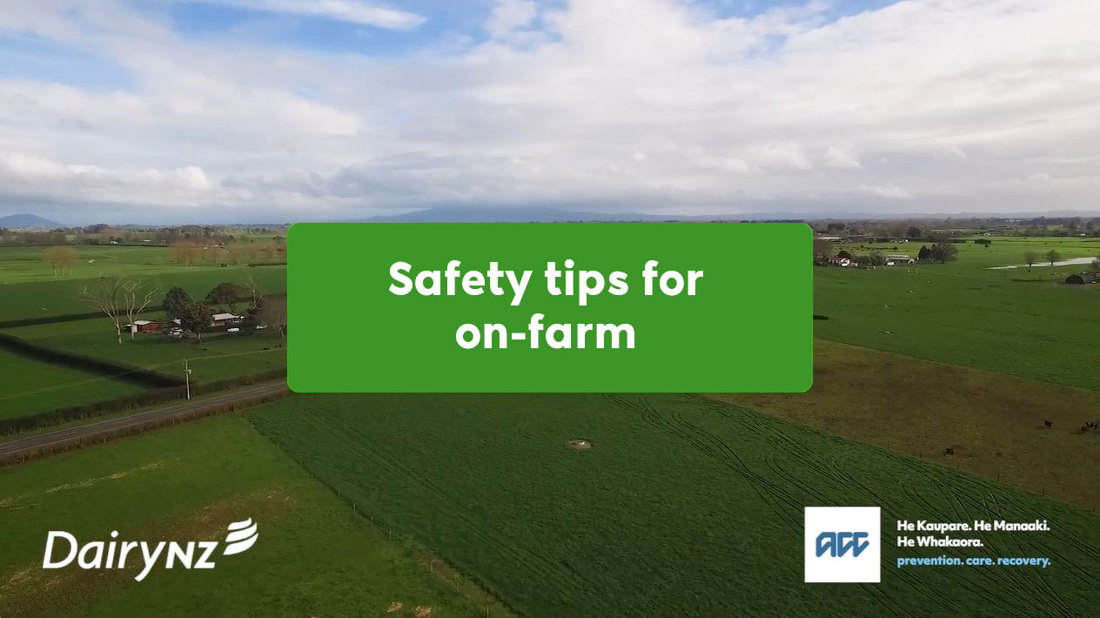
Keep a spring in your step - Choosing the right footwear
3 / 3 videos 0:59 min
Workshops used research insights to develop ideas that addressed the major risks. They involved farmers, health and safety experts, engineers, physios, ergonomics experts and dairy farm systems scientists. The aim was to eliminate risky tasks (where feasible) and/or to use engineering solutions to reduce risks around essential tasks.
Physical prototypes were produced by the project’s commercial product development partners, tested with farmers and refined based on their feedback.
Problem: Research found that collecting calves from the paddock is an injury-risk area.
Solution: A spring-loaded, one-way self-closing saloon gate that minimises the struggle of opening and closing the trailer gate while handling a wriggling calf or preventing escapees. Analysis by an ergonomics consultant rated this design better for posture than an existing calf trailer design.
Availability: DairyNZ worked with QCONZ and Kea Trailers to design, build and test a trailer with easy-entry gates. It can now be purchased either with a new trailer, or as a standalone gate to retrofit to existing Kea trailers. Custom sizes can be made to order. The Easy-Entry Calf Trailer Gate is available from KEA Trailers.
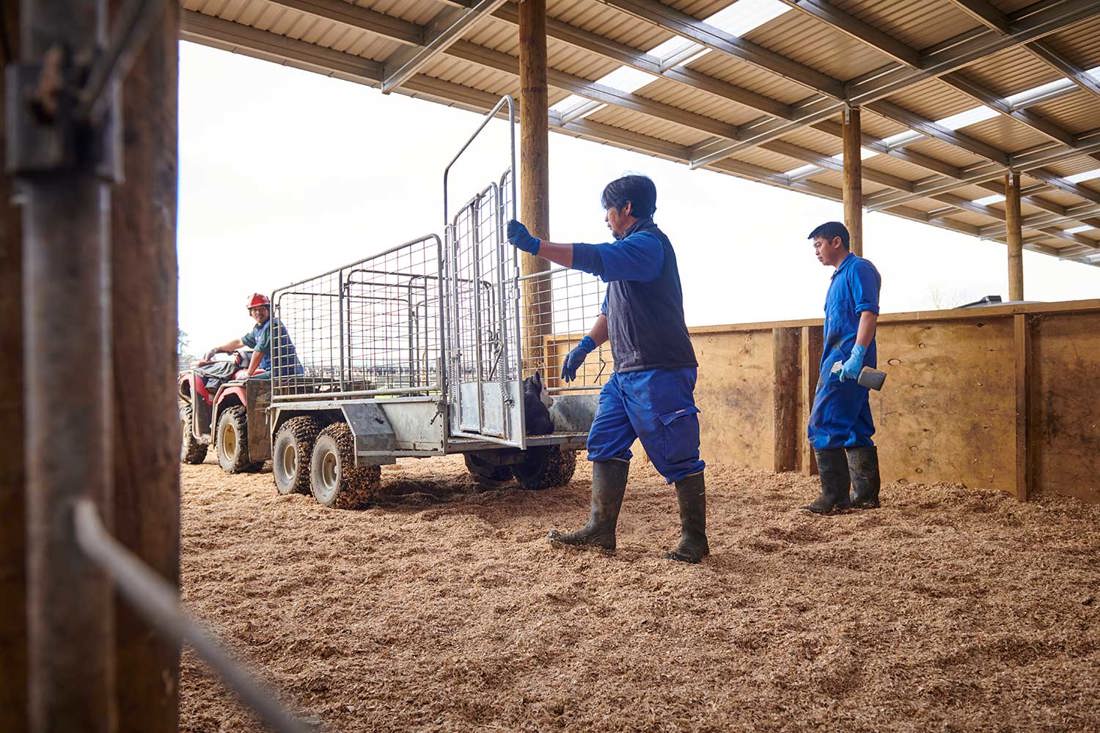
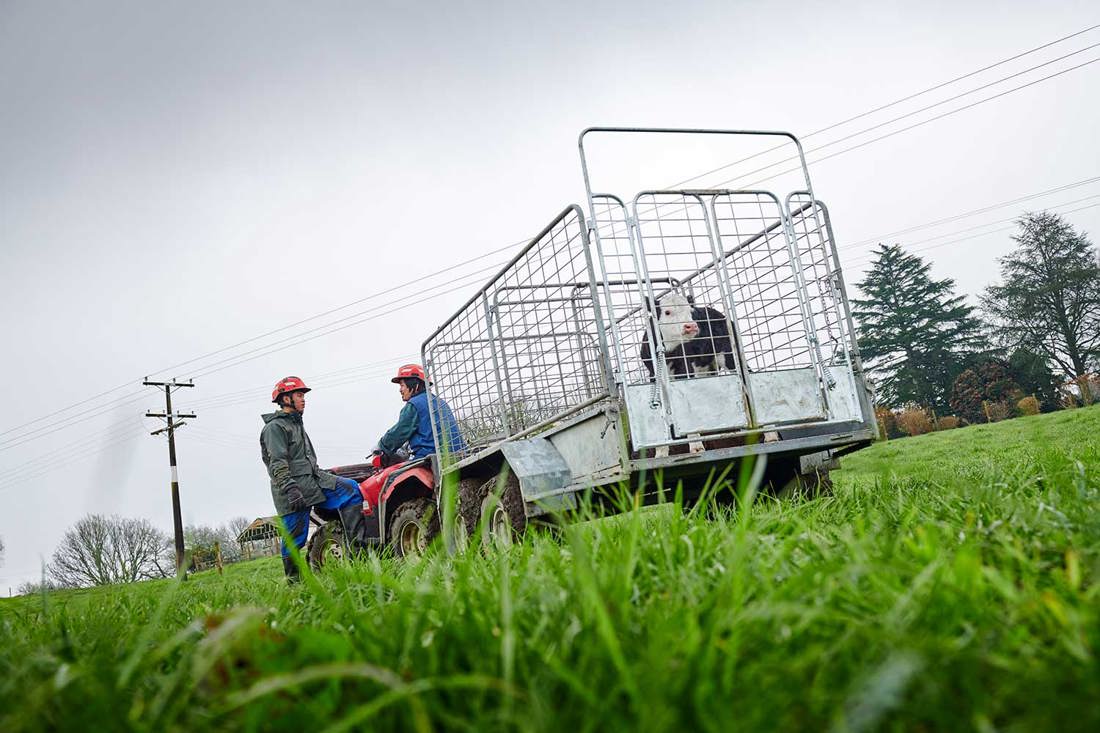
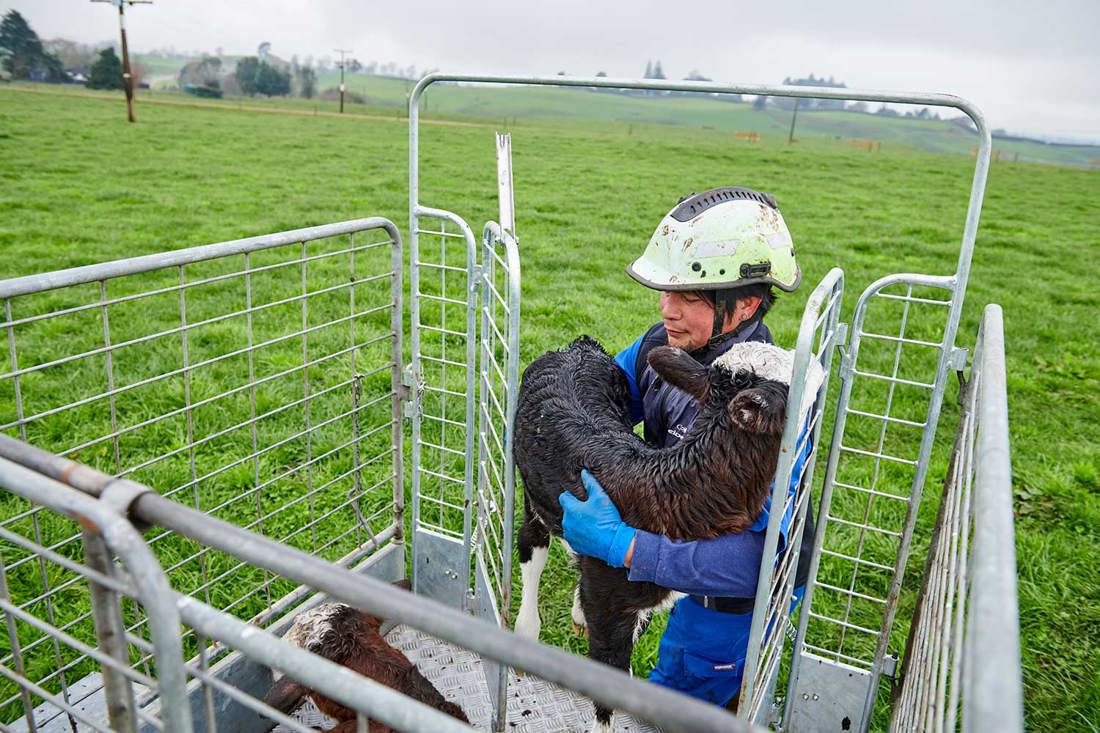
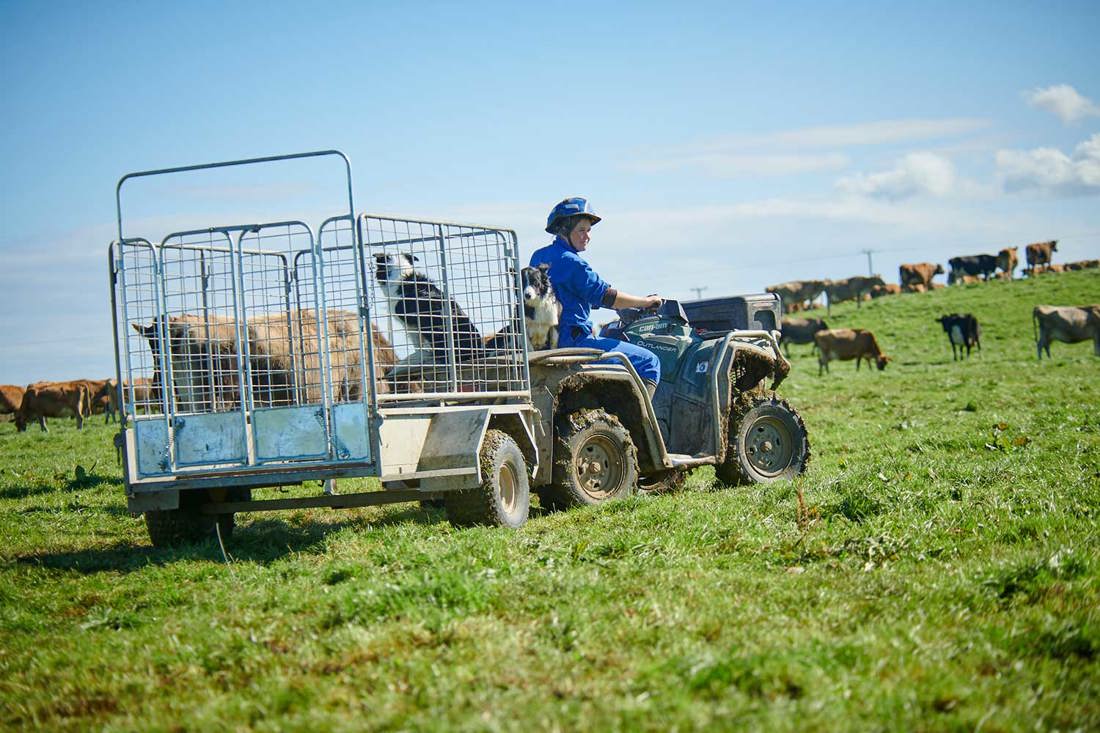
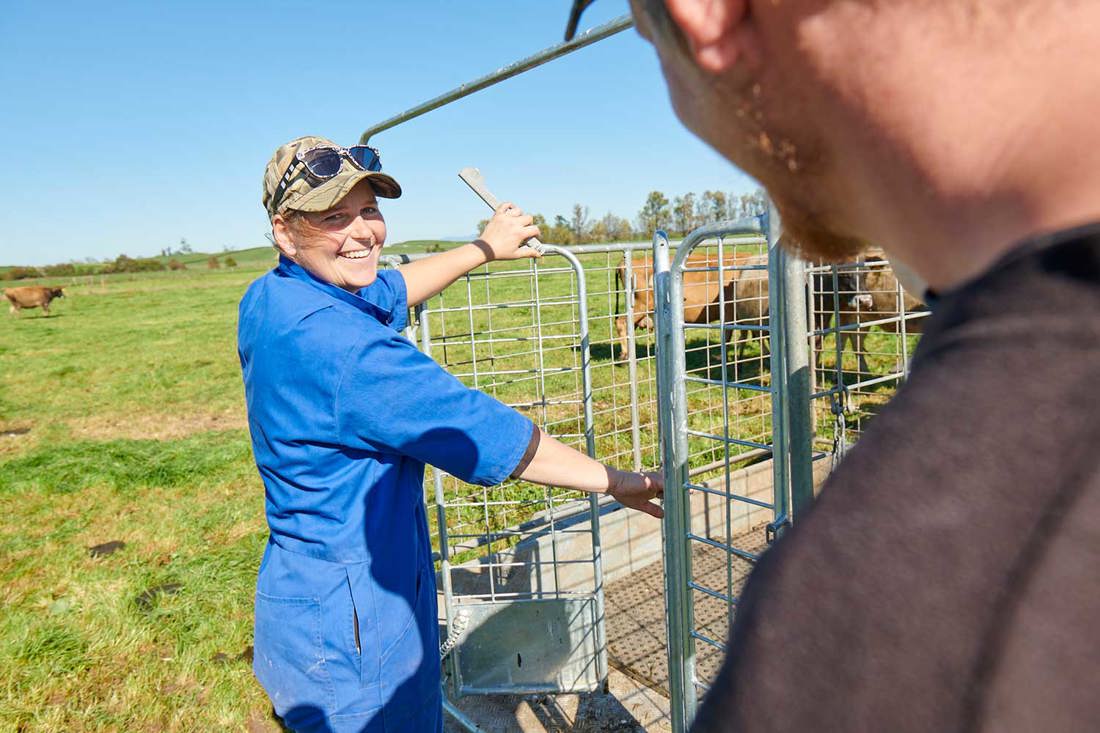
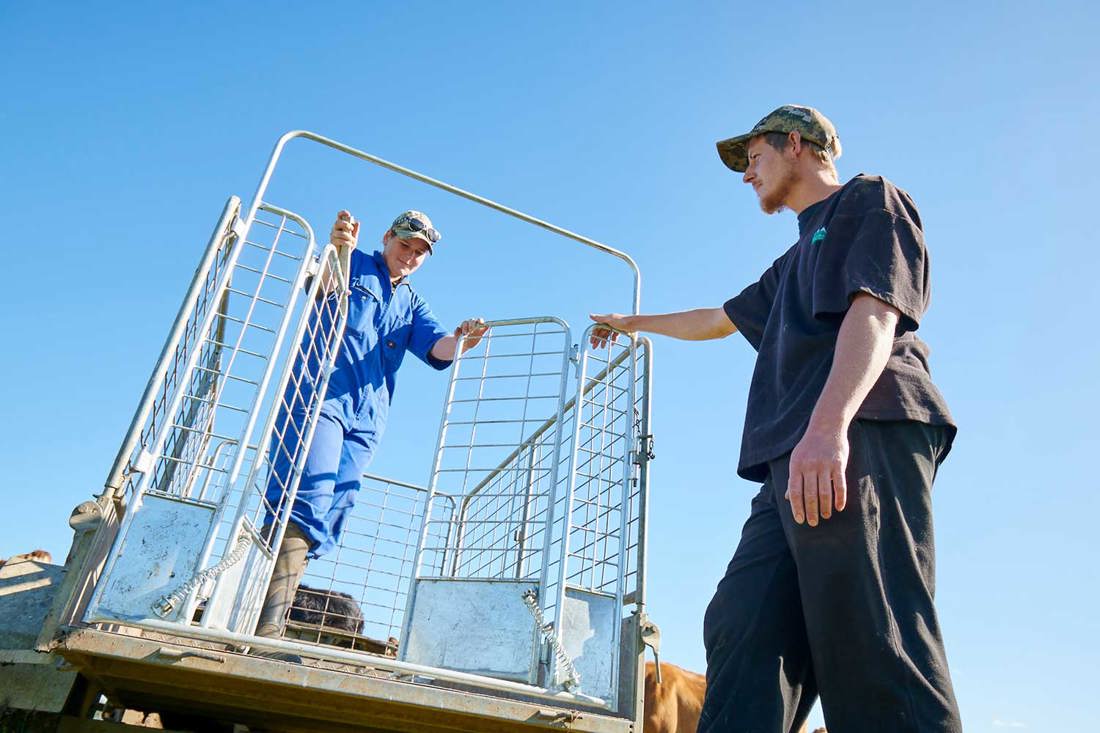
Problem: Calf rearing is an intense time of year on farms, and there are several injury risk areas including lifting calves, teaching calves to drink, and lifting buckets of milk and feed. Additionally, moving between calf pens with heavy weight can lead to risks when reaching or climbing over.
Solution: The design team, which included farmers, created a concept of a saloon-door gate system to move between pens. DairyNZ worked with QCONZ and Gallagher to design and test this concept on farms over spring calving.
Availability: DairyNZ worked with Gallagher on this solution. Click here to go on the waitlist with Gallagher.
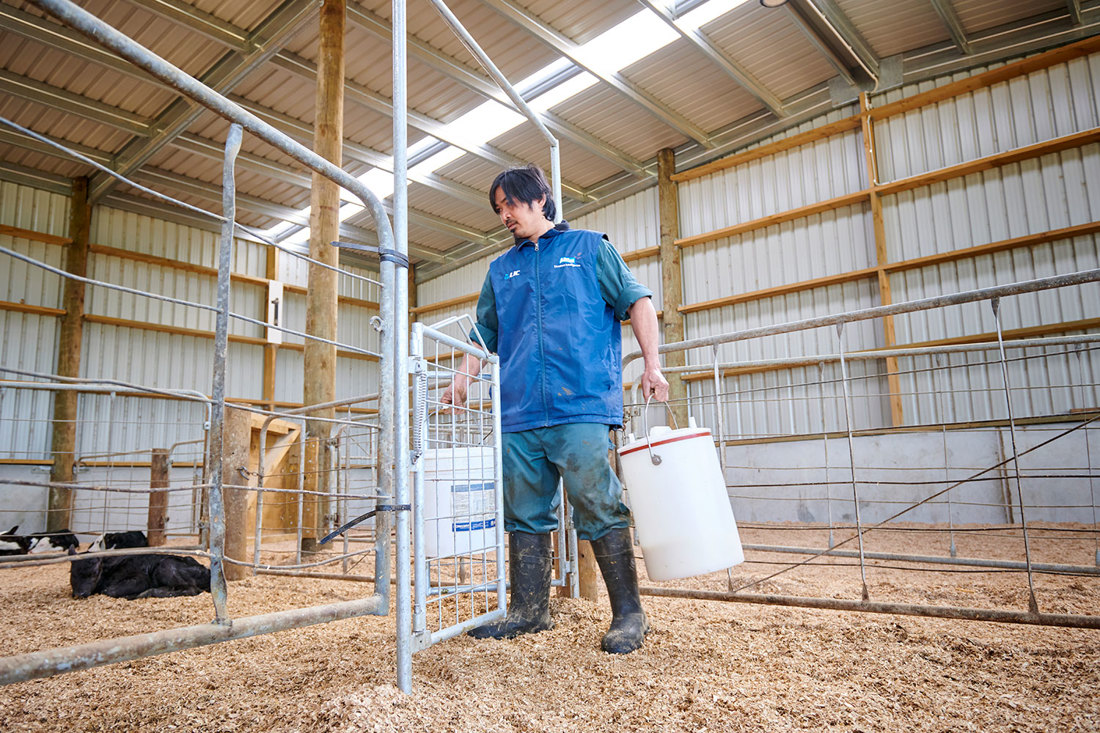

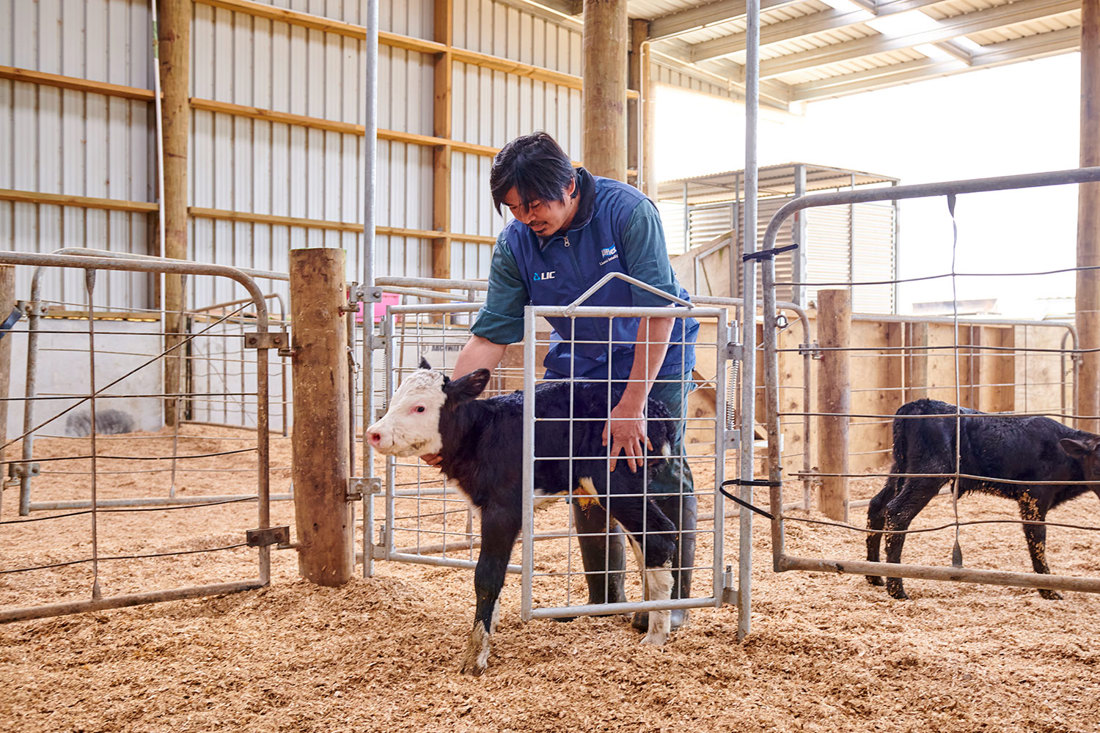
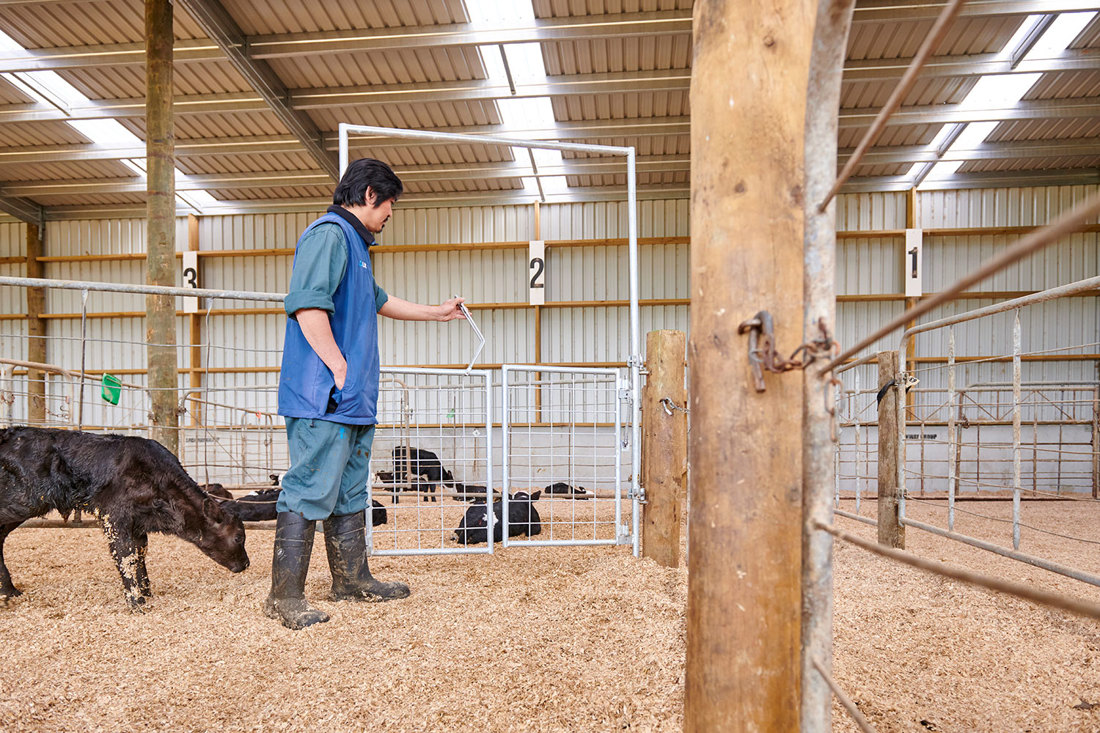

Problem: Injuries from lifting heavy calf milk buckets.
Solution: This pivoting trolley was designed to provide a safer and more efficient way to transport heavy buckets of milk or colostrum from the dairy to the calf-rearing shed. Buckets can slide onto the milk trolley platform without lifting, and remain upright when being moved, to prevent spills.
While many farms use piped milk systems, or transfer milk via trailers, this trolley offers a simple and cost-effective option for smaller farms. The project team has worked with WheelCo to create the prototypes.
Availability: WheelCo is evaluating production feasibility of the Easy-Lift Bucket Trolley.


Problem: Rotary platforms are at a fixed height but people milking vary in height which can lead to poor ergonomic cupping technique. Shorter milkers often use a thin mat, but that provides limited height improvement and can create a trip hazard.
Solution: A purpose-built, portable ‘cups-on’ mat that has a comfortable surface for standing long periods of time, elevates the height of a person cupping cows by up to 100mm and finished with sloped edges to reduce the trip hazard. We worked with The Wholesale Matting Company to develop a prototype which was tested on farms in 2024.
The Wholesale Matting Company will continue to work with farmers to improve the mat in 2024. Contact DairyNZ or The Wholesale Matting Company directly if you are interested in this mat for your rotary platform.

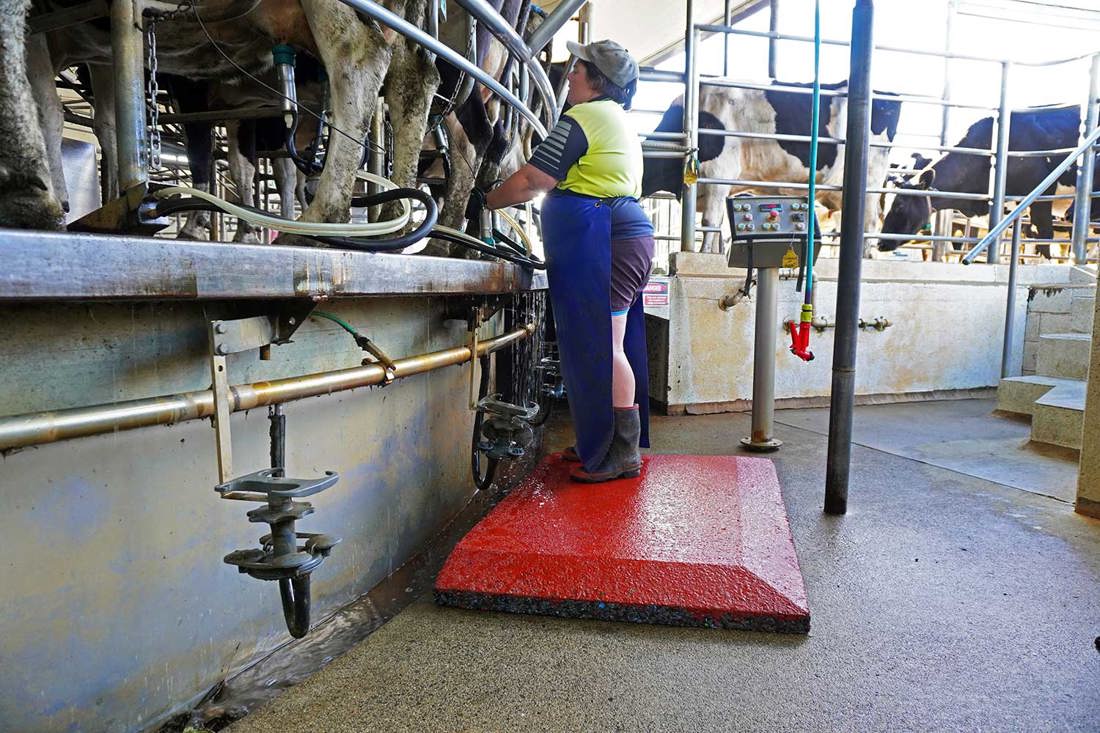
Problem: Heifers and smaller cows in the herd often stand forward in the bail, meaning people cupping cows must reach to cup them. Over time, this leads to more strain on backs and shoulders.
Solution: A flexible breast rail concept was created which contains an elasticated rope at the front of the bail to encourage smaller cows to stand further back, while larger cows can still comfortably stand in the bail. Testing on a DairyNZ research farm showed that the concept worked well, but cows need care and time to adapt, and some larger cows did not go right into the bail which triggered the emergency stop switch.
The Flexible Breast Rail can be made by farmers from low-cost materials. Contact the DairyNZ team for the plans and information on materials.
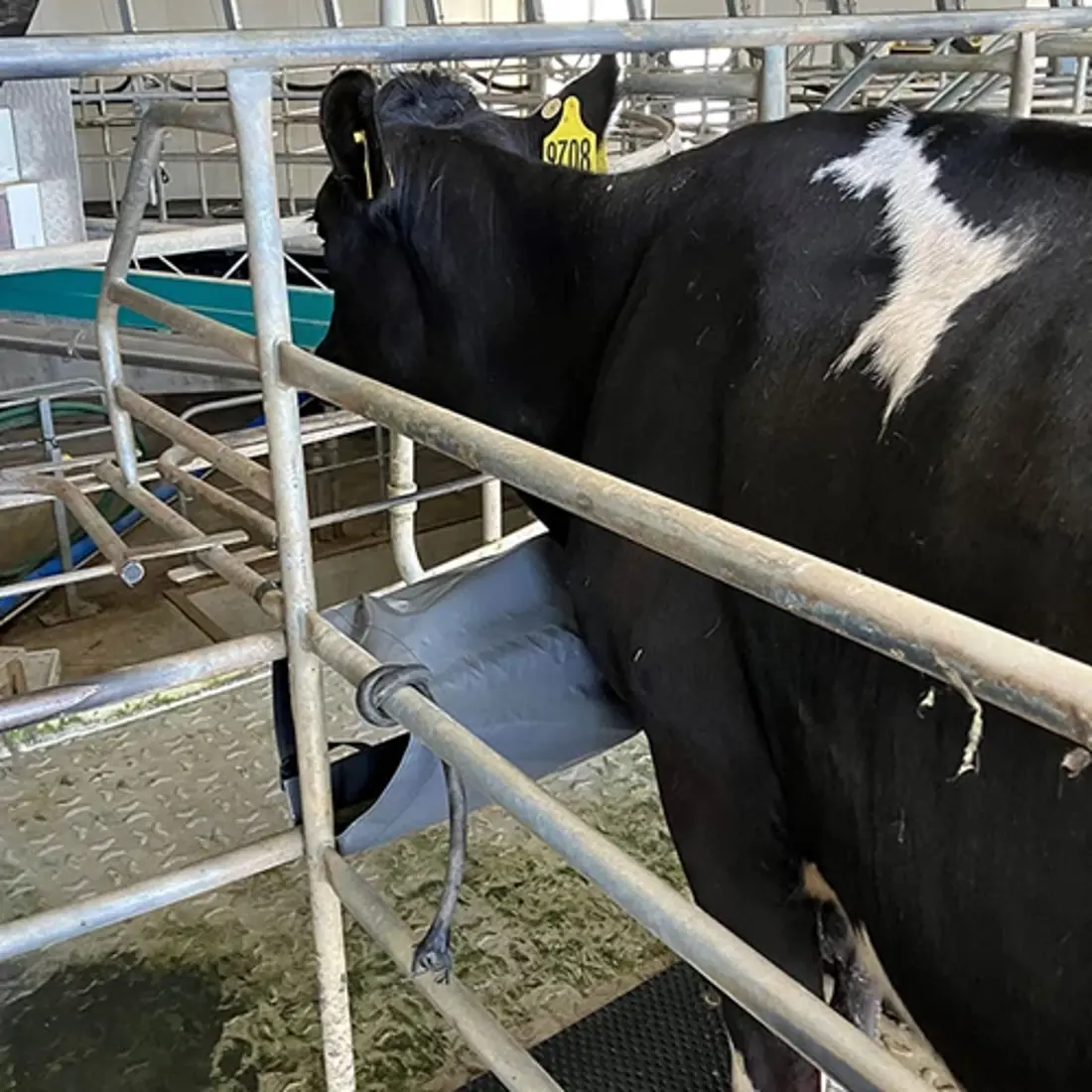
Problem: Farmers told us that lifting and caring for calves leads to back strain, and that cupping large herds can shoulder strain.
Solution: Lightweight, passive exosuits are being used more to reduce strain in repetitive work environments. So, why not dairy farming? We tested three exosuits to see if they’re effective for repetitive jobs in dairy farming. We found that exosuits are most useful when worn for dedicated jobs on-farm, such as training calves to feed.
There are a range of exosuits on the market, from places like Exxovantage and Herowear, however most still cost several thousand dollars each. They may be useful for specific tasks, or for helping people at risk of injury. A new lighter and less expensive exosuit for backs is being trialled on dairy farms in 2024.
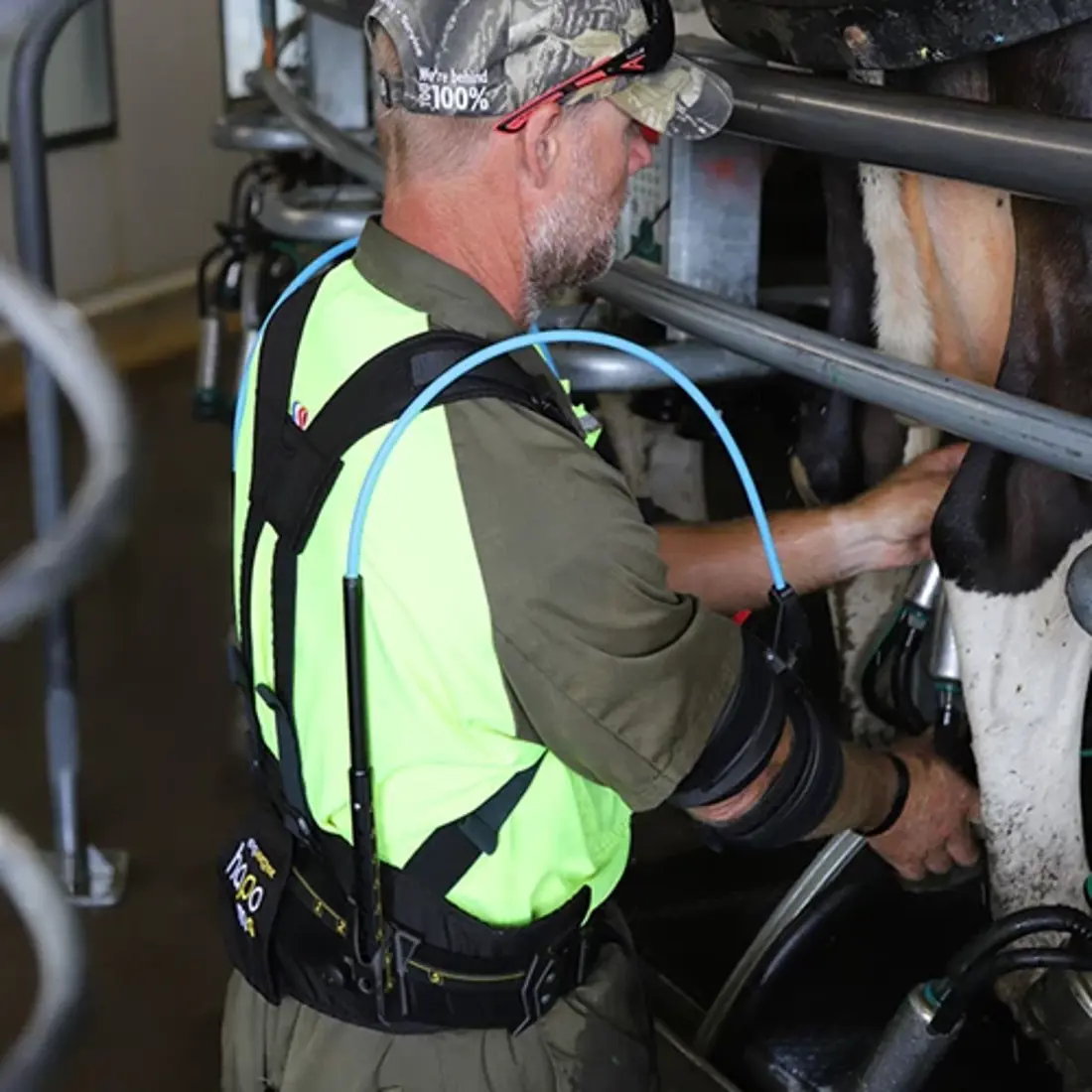
The project highlighted the impact that sprains and strains can have on farmers and productivity of dairy farm workplaces. The research helped to raise awareness of common sprain and strain injuries and create innovative solutions to reduce them. The project has led to providing farmers with tangible current and future options to reduce injury on-farm.
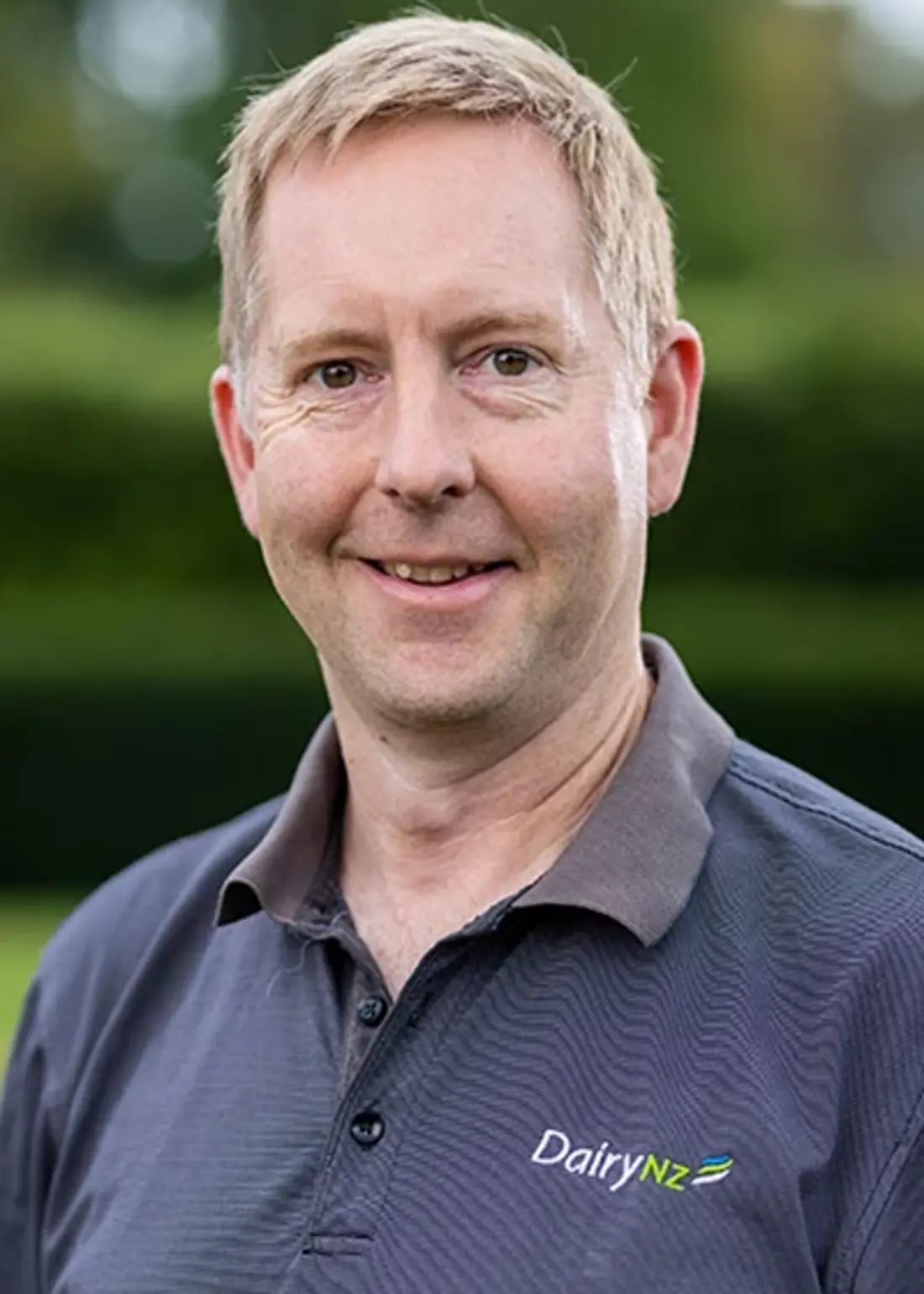
A social scientist, Callum leads projects in workplace design, workplace productivity, reducing dairy sprains and strains, and technology adoption. He specialises in technology adoption and integration using innovative and practical solutions on farm. For Callum, it's not just about creating science solutions, but ensuring they work for farmers.
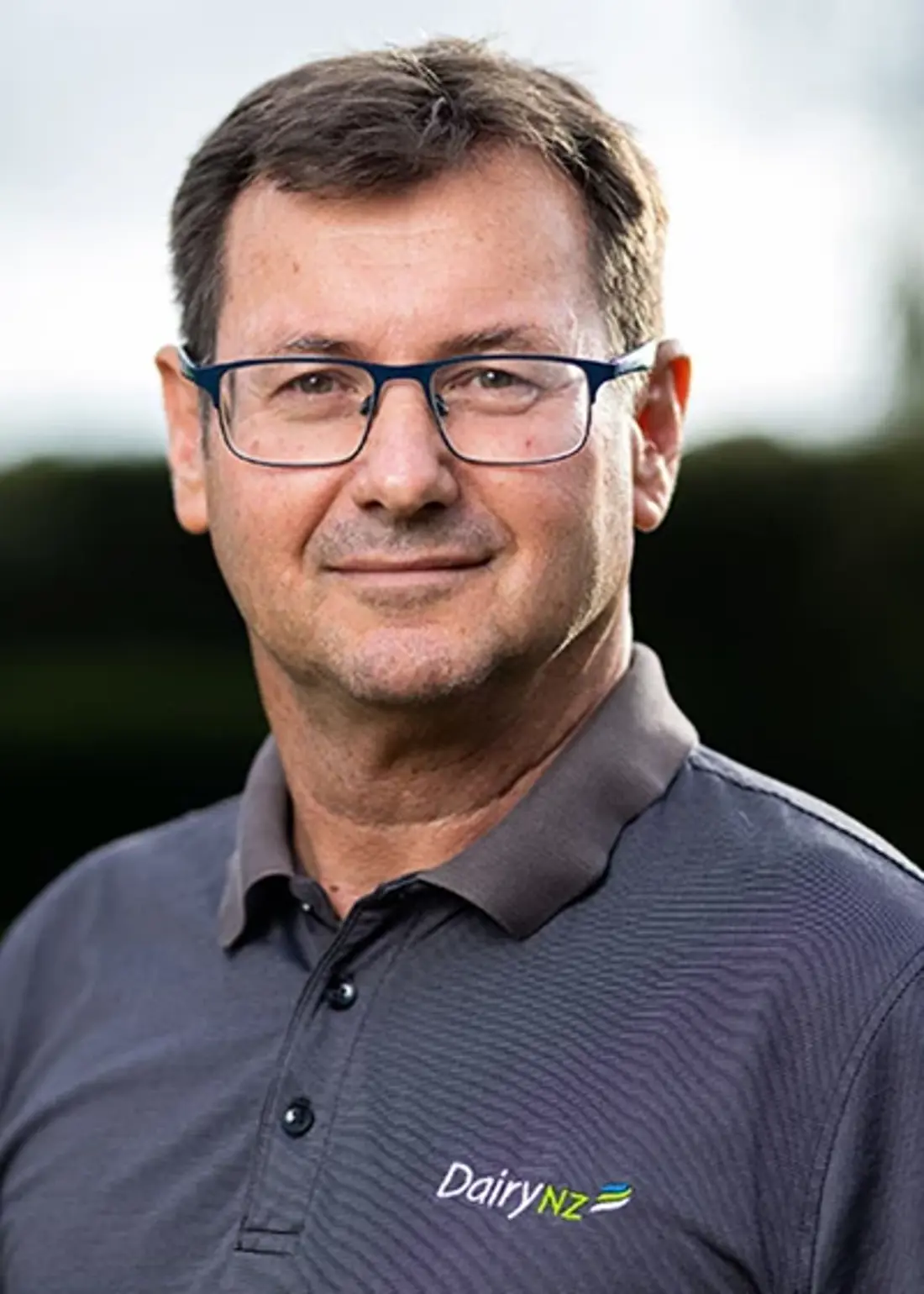
A research engineer, Brian enjoys working alongside farmers and technology developers to better understand farmer needs and opportunities to improve workforce productivity and workplace design. Providing information to support farmers in making investment decisions in technologies that will add value to their farm business and farm teams is a key part of his role.
Research teamContact for more information on the project: Callum.eastwood@dairynz.co.nz or Brian.DelaRue@dairynz.co.nz
This project is in collaboration with QCONZ, Healthy Lifestyle NZ, and Pāmu farms. This project has been made possible through $900,000 of co-funding by the ACC’s Workplace Injury Prevention programme, supported by a $150,000 investment by dairy farmers through the DairyNZ levy.

Now’s the perfect time to check in, plan, and set up for a strong season. We’ve pulled together smart tips and tools to help you stay ahead all winter long.
Whether you prefer to read, listen, or download handy guides, we’ve got you covered with trusted tools to support your journey every step of the way.
Put our proven strategies and seasonal tools to work. Boost production, support animal health and watch your profits hum.
Tools that are backed by science, shaped by farmers and made for this season.
That’s Summer Smarts.